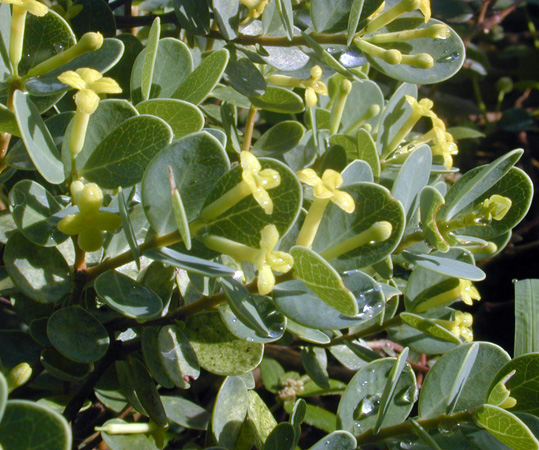
- INTRODUCTION
- RESTORATION
- SUCCESSION
What is ecological restoration?
Aside from the problem of deciding to what point in history a restoration should aspire to achieve, restoration cannot be viewed as exactly duplicative of any prior state, were that even possible. This point is one important to grasp, because certainly in Hawai‘i—and perhaps most places in the world—some number of ecosystem elements (read certain life forms) that previously contributed, perhaps importantly, to the functioning of the natural system, cannot be restored; other introduced elements cannot be removed. The interlocking nature of species' relationships within an ecosystem make it likely that even seemingly minor missing or additive elements are generally more important than realized.<1>. We therefore take, almost as an act of faith, that arrival at some close approximation to the original ecosystem will result in a stable and self-sustaining system that preserves what ultimately comes down to those aspects of particular value to humans, whether these be conservation of a particular suite of species or a prior wilderness landscape.
What all this really means is that any attempt at ecological restoration is likely to fall short of complete success, and the best chance of restoring adversely impacted ecosystems lies with selecting systems that are minimally altered. The term, recovery is a better description of the process than restoration in such cases, with assisted recovery decribing human intervention in the process. The farther a given landscape is from what once was, the less faithful to a past state the restoration is likely to be.
- National Research Council, Restoration of Aquatic Ecosystems: Science, Technology, and Public Policy/Committee on Restoration of Aquatic Ecosystems. NAS, 1992.
• Wikstroemia uva-ursi A. Gray
"...two ecological concepts emerge: ecological integrity and historical fidelity. When the complicated mix of restoration practice and theory is sorted out, what is left is a concern for the quality of the ecosysms resulting from restoration (integrity) and for the extent to which they reflect the history of the place (fidelity). - Higgs, Nature by Design, p. 95
Nā Pōhaku o Hauwahine: Restoration or Gardening?
So, how do we differentiate between gardening and restoration? Consider first the degree to which the outcome (or goal) matches some previously existing landscape, a concept called historicity or fidelity (see Higgs, sidebar). Two restoration "options" are worthy of consideration at this location: 1) the pre-aboriginal landscape, and 2) the pre-Cook (pre-Western) landscape. Prior to the arrival of the Polynesians some 3,500 years ago, windward O‘ahu was a very different place than it is today, or than it was at the start of Western influence following the "discovery" of the Hawaiian Islands by Captain James Cook in 1778 <2>. The Hawaiian's influence on the natural environment of the lowlands was nearly as devastating as that wrought by our current modern culture, differing however in two signifcant aspects: 1) structural landscape changes were limited to earthworks and stone works undertaken with simple hand tools and 2) non-native species introductions were limited to a few animals (pigs, rats, chickens) and culturally important plants (the aforementioned "canoe plants").
Whether the landscape in the vicinity of Nā Pōhaku o Hauwahine underwent its most dramatic changes in the centuries before Cook or after Cook, achieving any semblance of the original ecosystem—that present some 5,000+ years ago—is just no longer an option. Therefore, with respect to fidelity, we can easily admit Polynesian introductions while excluding modern plant introductions. Neither are "native" in the botanist's view, but early Polynesian introductions do have cultural significance and were very much part of the lowland, pre-Cook landscape. However, setting as a goal a mixture of native and modern introduced plants fails a historicity test of restoration and conceptualy falls to the side of gardening.
Basic principals: Succession
![]() CLICK HERE
CLICK HERE
If one believes that human activities can best improve land, then one restores in a process likened to gardening; yet if one believes that natural activities can best improve land, then one restores in a process that might be called naturalizing—or perhaps rewilding. A gardener promotes culture on a natural landscape, whereas a naturalizer promotes nature on a cultural landscape. – Marcus Hall. American Nature, Italian Culture: Restoring the Land on Two Continents, p. 43
•Initial stage: clearing an area of all
non-native plants. This process is repeated several times over several years at a location.
Questions?
Some common questions answered ![]() CLICK HERE
CLICK HERE